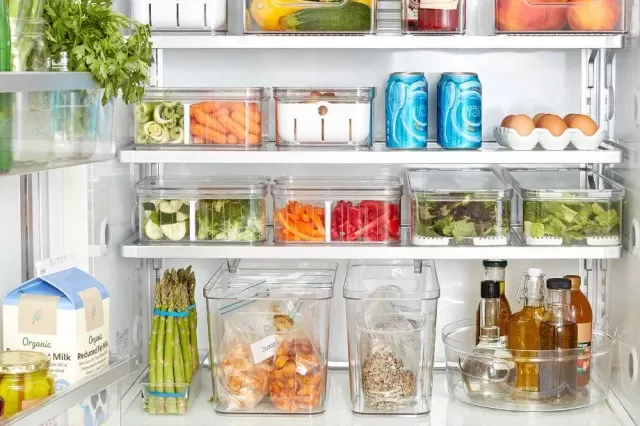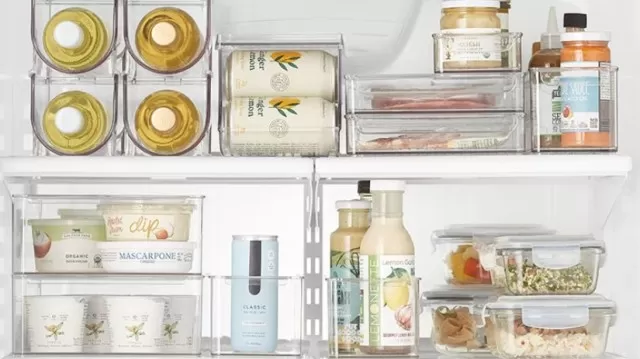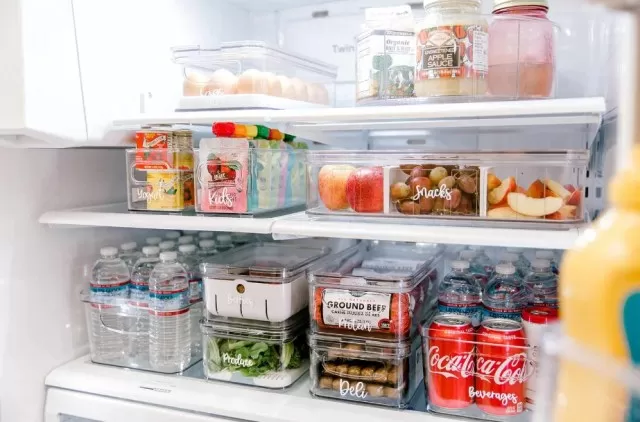The refrigerator is a commonly used household appliance, with frequent visits throughout the day for various meals and snacks.
However, without proper organization, the inside of the fridge can quickly become messy and disorganized.
Fortunately, implementing refrigerator organization ideas can simplify the process and bring order to Your Fridge.
Devoting just an hour or two to sorting and organizing the contents of your refrigerator can prevent food waste and unpleasant odors, while also streamlining your meal preparation.
Elevate your kitchen organization by incorporating these effective refrigerator organization ideas.
Refrigerator Organization Ideas

Begin by selecting a specific section of your refrigerator to organize, rather than trying to tackle the entire fridge at once.
Clear out all items and temporarily store them in a cooler to make space for the organization process. Take this opportunity to check the expiration dates of each item and discard anything that has expired.
When restocking the fridge, consider removing items from their original packaging to save space and use a permanent marker to label individual containers with their expiration dates. Before placing items back into the fridge, wipe down all surfaces with a damp cloth and add a DIY deodorizer, such as a jar of baking soda or coffee, to eliminate unpleasant odors.
Remember that the shelves in your refrigerator are adjustable, allowing you to customize the space according to your needs.
Experiment with different shelf heights to accommodate items of various sizes and create additional space.
Focus on organizing the upper shelves of your refrigerator.
Since this area is typically the coldest, it is ideal for storing drinks, dairy products, leftovers, and ready-to-eat foods. For example, keeping milk on an upper shelf rather than the door helps maintain a more consistent temperature.
Label leftover containers with expiration dates to avoid consuming food past its prime. Group similar foods together and use clear bins, baskets, or containers to keep items properly organized and maximize space.
If you enjoy chilled wine, consider using a wine rack to neatly store your bottles.

Move on to organizing the lower shelves of the refrigerator.
Start by placing the largest items first and grouping foods by type. Opt for clear containers that allow you to easily see the contents.
Adding a Lazy Susan turntable to one shelf provides convenient access to grab-and-go items like condiments and yogurt. Place raw meat packages on the lowest shelf or in the lowest crisper drawer to prevent cross-contamination.
When it comes to the crisper drawers, line the bottoms with removable shelf liners or placemats for easy cleaning.
Use small baskets or dividers to sort the contents of the drawers, placing heavier items at the bottom and more delicate ones on top. Adjust the humidity controls of the crisper drawers based on the types of products you’re storing.
Low humidity is suitable for foods that rot easily, while high humidity is best for items that wilt in the fridge.

Focus on decluttering the door compartments, which are the warmest part of the fridge.
Reserve these compartments for soft drinks, condiments, sauces, and butter. Arrange your most frequently used items at eye level for easy access and group similar items together.
Consider labeling each section with the respective product category.
When organizing the freezer, store leftover food in containers that closely match the size of the food to prevent freezer burn.
Label leftovers and prepared foods with expiration dates to keep track of their freshness. Create zones within the freezer and group items by category.
Use clear plastic tubs and dividers to further organize the shelves, and freeze items flat whenever possible to save space. Avoid storing high-fat items like ice cream in the door to prevent melting and refreezing.
By implementing these refrigerator organization ideas, you can create a well-organized fridge that keeps your food fresh and easily accessible.
*The information is for reference only.